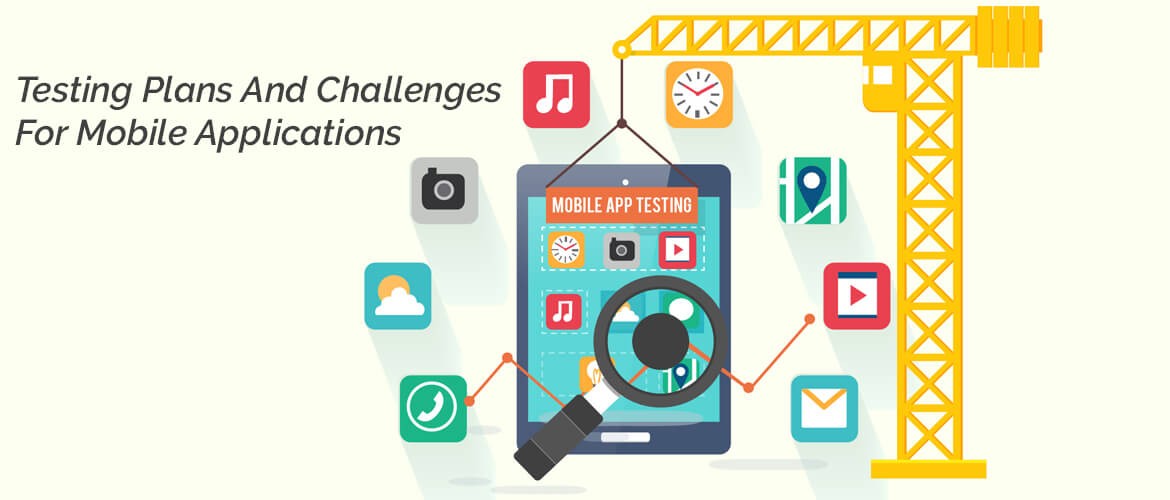
-
Testing plans and challenges for mobile applications
The increasing usage of smart phones, tablets and other mobile devices have fueled the growth of mobile applications thereby creating a strong need for mobile application testing. Mobile devices have become the predominant medium for communication worldwide. The main goal of testing is not only to find errors, instead, it should be used to check whether the app works well, whether it meets the function as expected and it meet all the needs of users. In mobile application testing, you need to consider a mix of different techniques and methods as it provides unique challenges. Also, you will need to think of various testing strategies that links different testing options that as a whole, delivers the best overall testing result, which matches the tradeoffs between cost, quality, and time-to-market. In this blog post, we examine various testing options for mobile applications which you need to consider in determining your testing strategy.
Testing Plans:
-
-
To obtain significant market coverage, apps must run at least iOS or Android, ideally both.
-
-
To test an app on every single targeted mobile device is pretty hard, due to the multitude of manufacturers, models, screen densities, UIs and platform versions.
-
-
Any network-aware mobile app requires performance testing under a variety of protocol, bandwidth and load conditions. This is particularly necessary for those mobile apps which depend heavily on a back-end server.
Selecting Target Devices:
Target devices which are used for testing a mobile app should stabilize the need to optimize the duration and cost of testing process.
Emulators vs. Physical Devices:
Device emulators are extremely useful because they support rapid and efficient testing process. Device emulators are cost-effective, useful for basic application functionality testing, provide excellent options for network bypass and so on.Also, Beta testing is a major area where emulators fail in comparison to physical mobile devices. Beta testing gives you a chance to test your mobile app for factors like,
-
-
Network density
-
-
How the app behaves on specific devices
-
-
How real-world users interact with the app
-
-
Different battery states on the devices
-
-
Multiple networks (Wi-Fi, 4G, 3G, etc.)
Testing challenges:
Mobile application testing primarily checks and ascertains the quality and performance of the final product. Following are the key challenges to be mindful about while testing a mobile app:
Device fragmentation:
-
-
Mobile applications are used on multiple devices and platforms, such as iPhone, Android, Windows Phone, BlackBerry, and more.
-
-
The testers experience major challenge to guarantee multi-device, multi-platform compatibility of the app on various devices, platforms, screen resolutions, memory sizes, and connectivity options etc.
-
-
During the testing process, the testers have to find out whether the app can be downloaded to the device, executed on the device, and act together with the back-end content infrastructure effectively.
-
-
When updates are completed, the testers have to make sure that the application can be pushed out and accepted by the end user.
Mobile App Testing on Cloud:
Cloud-based testing is a needed option for testing mobile applications. Cloud computing offers a web-based mobile testing environment, where applications can be deployed, tested, and managed effectively. Cloud-based application testing delivers the following benefits, Cloud testing environments have the ability to support complex applications. It helps the problems of testing dynamic, complex, and differing applications in an in-house environment. One of the main benefits of cloud testing is the amount of scalability it provides to control an application’s capacity threshold. It offers real-time testing results through which, the defects can be analyzed while the tests are running.

Network Connectivity:
Most of the mobile applications depend on network connectivity to deliver rich functionality. Therefore, testing mobile apps in real network environments is very much important, to get the real picture and to evaluate the performance of the app. Several network simulation tools are available to test mobile apps in various network speeds, bandwidths variations, etc., which can add great value to the testing activities. In addition to testing the app in a full internet connectivity scenario, some of the other factors should also be considered by the testers.

The factors are,
-
-
Limited connectivity
-
-
Connectivity with high latency.
-
-
No connectivity
-
-
Metered connectivity should also be taken into account
Conclusion:
We hope that the testing strategies we highlighted above will be helpful in overcoming some of the obstacles of mobile application testing and also that it might help build quality mobile apps for your customers.
Posted by admin Posted on 2017-04-30 -
Drop us a line
Please correct the following errors and try again:

Post Comments 0